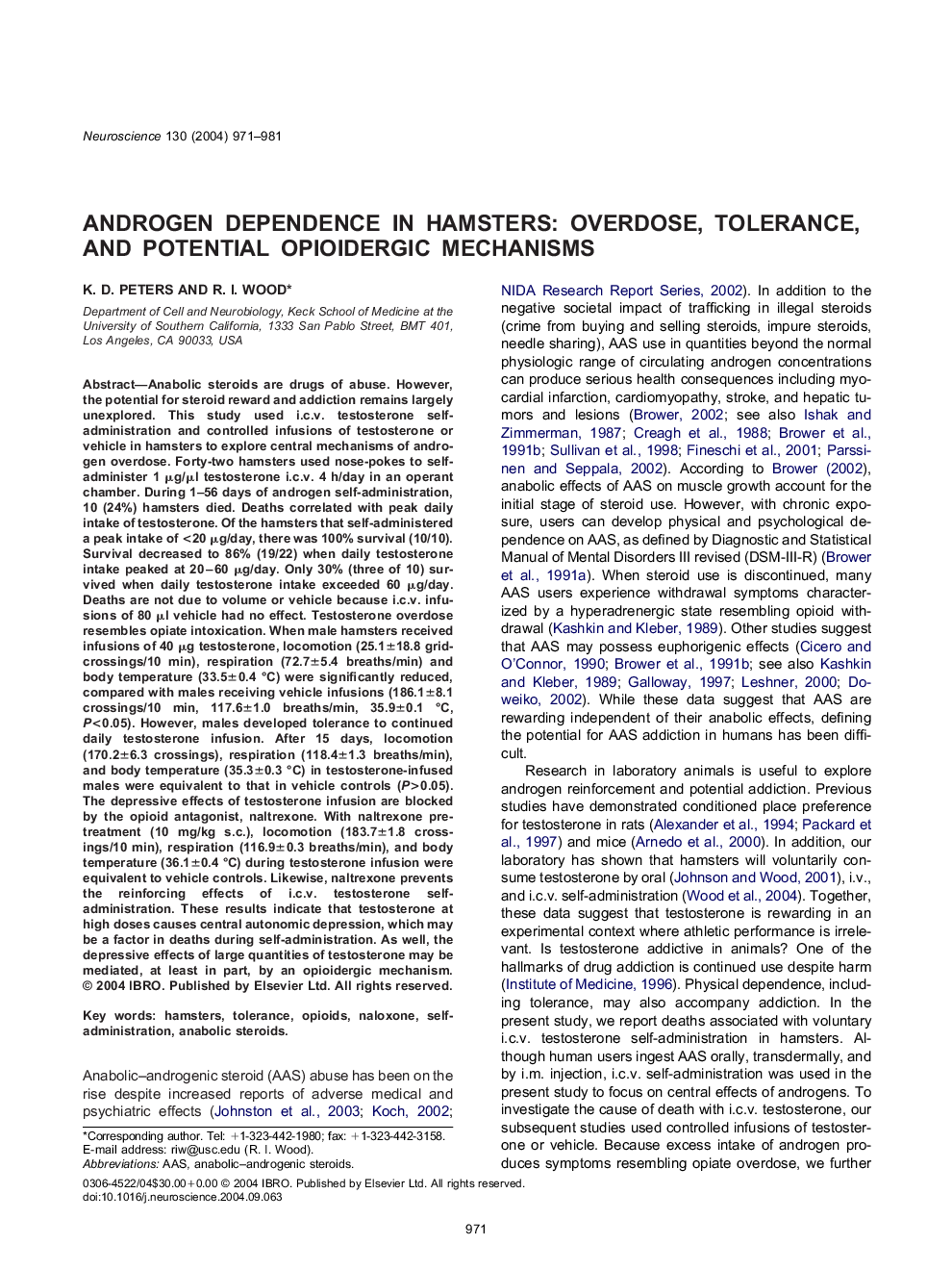| کد مقاله | کد نشریه | سال انتشار | مقاله انگلیسی | نسخه تمام متن |
|---|---|---|---|---|
| 9425707 | 1614909 | 2005 | 11 صفحه PDF | دانلود رایگان |
عنوان انگلیسی مقاله ISI
Androgen dependence in hamsters: Overdose, tolerance, and potential opioidergic mechanisms
دانلود مقاله + سفارش ترجمه
دانلود مقاله ISI انگلیسی
رایگان برای ایرانیان
کلمات کلیدی
موضوعات مرتبط
علوم زیستی و بیوفناوری
علم عصب شناسی
علوم اعصاب (عمومی)
پیش نمایش صفحه اول مقاله

چکیده انگلیسی
Anabolic steroids are drugs of abuse. However, the potential for steroid reward and addiction remains largely unexplored. This study used i.c.v. testosterone self-administration and controlled infusions of testosterone or vehicle in hamsters to explore central mechanisms of androgen overdose. Forty-two hamsters used nose-pokes to self-administer 1 μg/μl testosterone i.c.v. 4 h/day in an operant chamber. During 1-56 days of androgen self-administration, 10 (24%) hamsters died. Deaths correlated with peak daily intake of testosterone. Of the hamsters that self-administered a peak intake of <20 μg/day, there was 100% survival (10/10). Survival decreased to 86% (19/22) when daily testosterone intake peaked at 20-60 μg/day. Only 30% (three of 10) survived when daily testosterone intake exceeded 60 μg/day. Deaths are not due to volume or vehicle because i.c.v. infusions of 80 μl vehicle had no effect. Testosterone overdose resembles opiate intoxication. When male hamsters received infusions of 40 μg testosterone, locomotion (25.1±18.8 grid-crossings/10 min), respiration (72.7±5.4 breaths/min) and body temperature (33.5±0.4 °C) were significantly reduced, compared with males receiving vehicle infusions (186.1±8.1 crossings/10 min, 117.6±1.0 breaths/min, 35.9±0.1 °C, P<0.05). However, males developed tolerance to continued daily testosterone infusion. After 15 days, locomotion (170.2±6.3 crossings), respiration (118.4±1.3 breaths/min), and body temperature (35.3±0.3 °C) in testosterone-infused males were equivalent to that in vehicle controls (P>0.05). The depressive effects of testosterone infusion are blocked by the opioid antagonist, naltrexone. With naltrexone pre-treatment (10 mg/kg s.c.), locomotion (183.7±1.8 crossings/10 min), respiration (116.9±0.3 breaths/min), and body temperature (36.1±0.4 °C) during testosterone infusion were equivalent to vehicle controls. Likewise, naltrexone prevents the reinforcing effects of i.c.v. testosterone self-administration. These results indicate that testosterone at high doses causes central autonomic depression, which may be a factor in deaths during self-administration. As well, the depressive effects of large quantities of testosterone may be mediated, at least in part, by an opioidergic mechanism.
ناشر
Database: Elsevier - ScienceDirect (ساینس دایرکت)
Journal: Neuroscience - Volume 130, Issue 4, 2005, Pages 971-981
Journal: Neuroscience - Volume 130, Issue 4, 2005, Pages 971-981
نویسندگان
K.D. Peters, R.I. Wood,